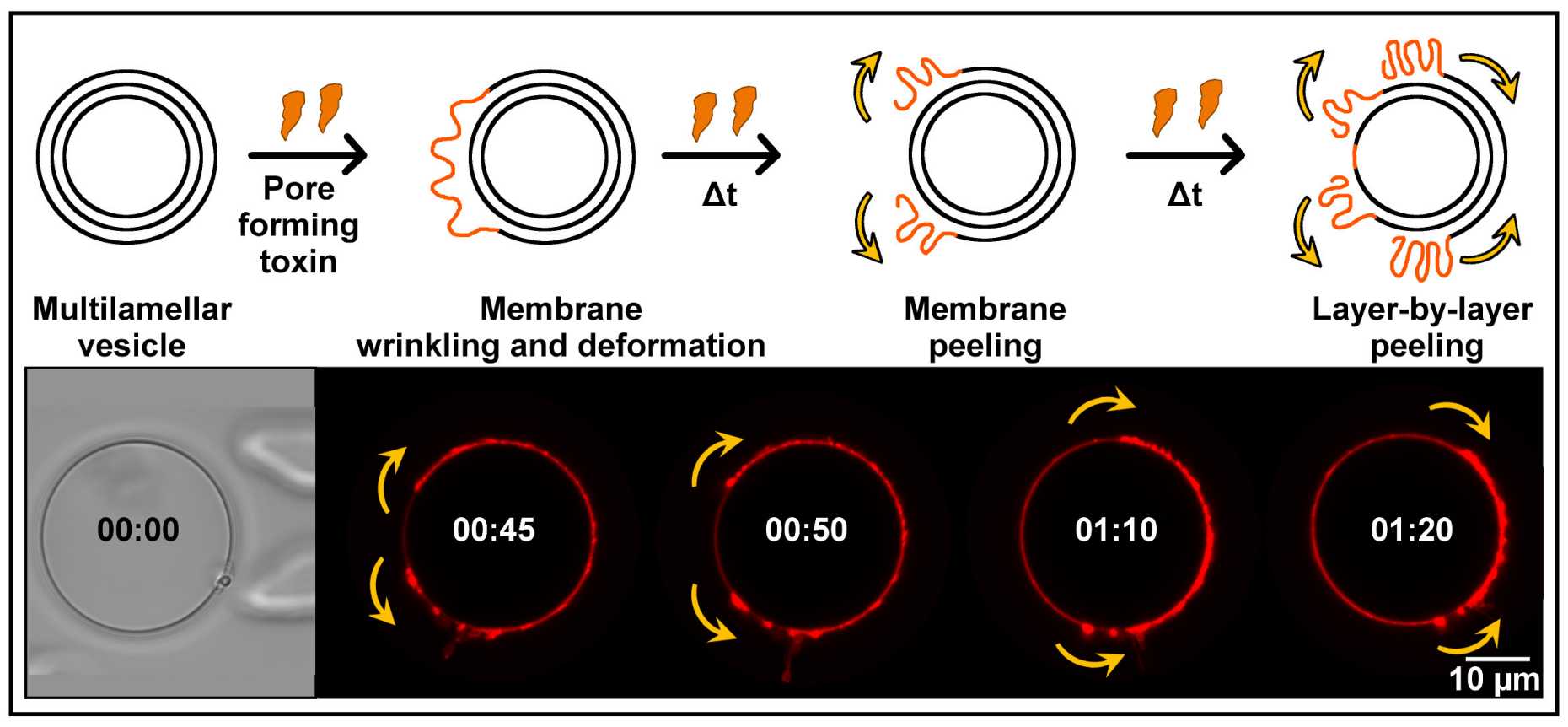Dr. Patrick Drücker published his work in Biomaterials Science
"Membrane deformation and layer-by-layer peeling of giant vesicles induced by the pore forming toxin pneumolysin"
Authors: Patrick Drücker, Ioan Iacovache, Simon Bachler, Benoît Zuber, Eduard B. Babiychuk, Petra S Dittrich and Annette Draeger
Abstract: Protein-membrane interactions that modify the shape of membranes are important for generating curvature, membrane deformation by protein-protein crowding or trafficking of vesicles. Giant vesicles represent a simplified but versatile model for biological membranes and are commonly employed for the study of lipid domains and permeation across compartments. In this study, we investigated the interaction of pneumolysin (PLY), a pore-forming toxin secreted by Streptococcus pneumonia, with multilamellar and unilamellar membranes. It reveals an enlargement of membrane area due to the insertion of pores into the bilayer and protein-membrane aggregations that induce membrane deformation and wrinkling. Moreover, we demonstrate that PLY peel-off layers of multilamellar giant vesicles in a hitherto unknown layer-by-layer mechanism revealing membrane lamellarity. We employed microfluidic methods to capture giant vesicles and confocal laser scanning microscopy, transmission microscopy, dynamic light scattering and cryo-electron microscopy to disclose the structure of multilamellar vesicles. Based on our findings we suggest, how back-to-back pore arrangements stabilize large PLY-membrane entities and that pore-displaced lipids possibly remain in the membrane.
external pageRead the full papercall_made

